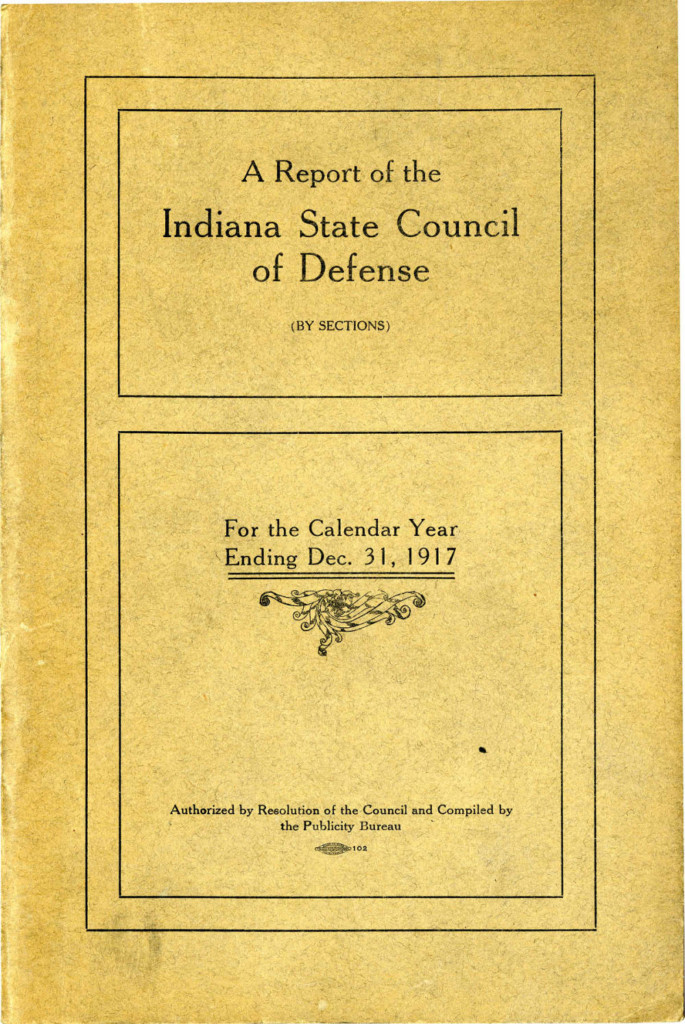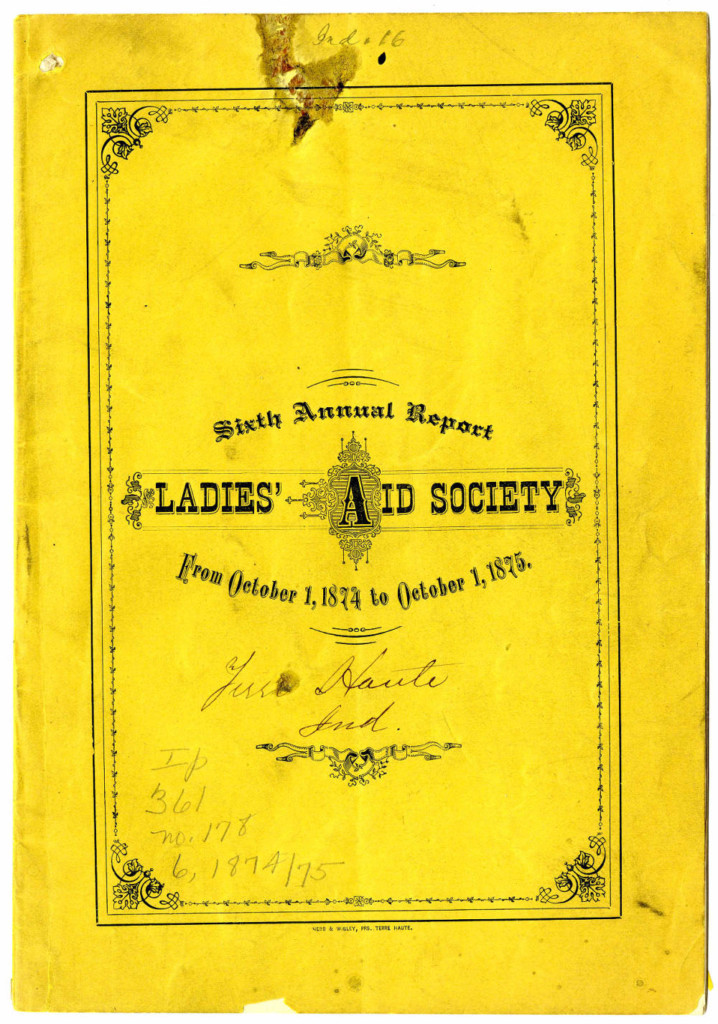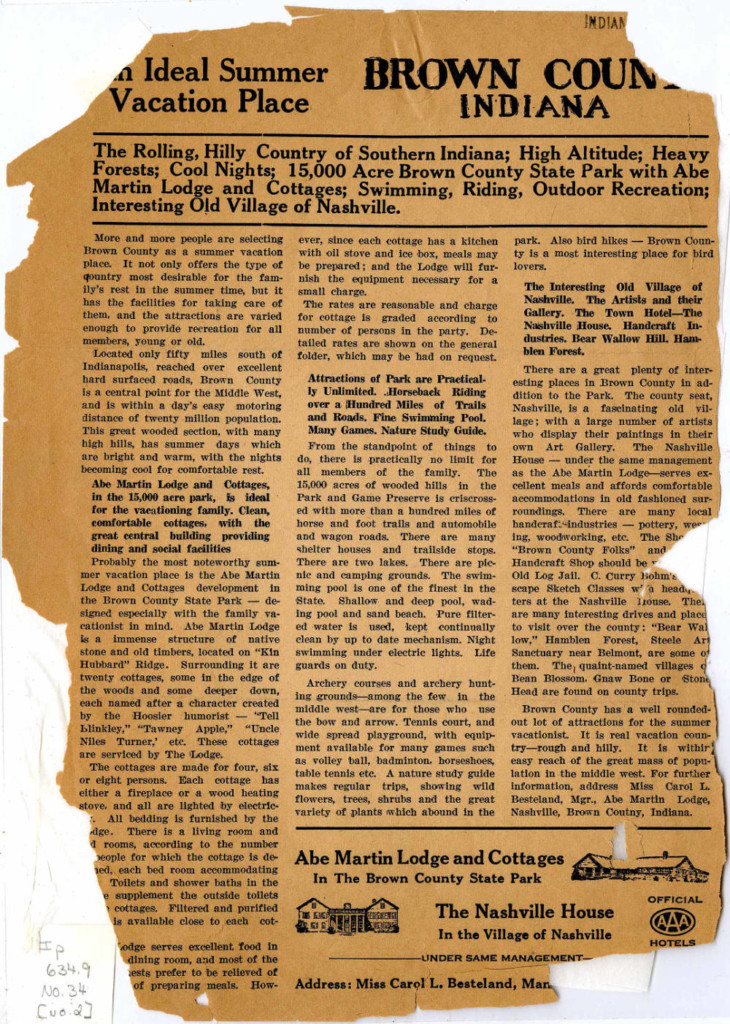“I want to find out more about the Indiana Council of Defense. What do you have in your collections?”
This is a typical reference question that we get here at the Indiana State Library. In response, we search our catalog to see what we have in our collection. We provide a list of items for patrons to browse and ultimately choose what they want to see. We then retrieve the materials for the patron to view and eventually they get re-shelved.
However, times are changing. Over the past decade, digital versions of those materials have populated the internet. Libraries, museums and historical societies of all sizes across the globe are making their collections available online. Here at the Indiana State Library, our digital collections also continue to grow.
But how? How do materials make it to our digital collections? Let’s look at how that happens by looking at the first part of the process.
Our first step is selection. Or, in other words, choosing what gets digitized. We are often looking for materials that we think patrons might use. This can be hard to determine since, like our collections, research is vast and covers a variety of topics. But, we have some guidelines that help us.
First, what happened on this date? Which historical event anniversaries or bicentennials are coming up? For example, it’s been one hundred years since the ratification of the 19th Amendment. We have recently added over 100 items to our digital collections pertaining to the Suffrage Movement.
 Another example relating to anniversaries is the upcoming bicentennial of the founding of Indianapolis. We scoured our collections for materials about the centennial to see how the city celebrated. Here’s a program detailing the pageant they had a century ago:
Another example relating to anniversaries is the upcoming bicentennial of the founding of Indianapolis. We scoured our collections for materials about the centennial to see how the city celebrated. Here’s a program detailing the pageant they had a century ago:
 Another aspect of selection is condition. As materials age, they become brittle, making them fragile. For example, the anniversary of World War I was the perfect time to harvest materials from our collections to scan for researchers and students in order to help them find primary sources created during the war years. Sometimes these materials are printed on cheap paper and that paper was not meant to last long.
Another aspect of selection is condition. As materials age, they become brittle, making them fragile. For example, the anniversary of World War I was the perfect time to harvest materials from our collections to scan for researchers and students in order to help them find primary sources created during the war years. Sometimes these materials are printed on cheap paper and that paper was not meant to last long.
Here’s an example of a letter. You can see that it has yellowed over the years and part of it is breaking off:
 Maps are another example of materials that are hard to handle. We have a large map collection, some of which require conservation work due to their age and condition. This one is very hard to physically handle, making it a perfect map to digitize.
Maps are another example of materials that are hard to handle. We have a large map collection, some of which require conservation work due to their age and condition. This one is very hard to physically handle, making it a perfect map to digitize.
 We also look at requests from our patrons, as well as our community. Back to our question at the top of this blog post, we have lots of materials about the Indiana Defense Council that were created during World War I. In this case, we can refer the patron to our digital collections.
We also look at requests from our patrons, as well as our community. Back to our question at the top of this blog post, we have lots of materials about the Indiana Defense Council that were created during World War I. In this case, we can refer the patron to our digital collections.
Among the materials, we have a 1917 report from the Indiana State Council of Defense. This would also be a great time to revisit the physical collections to see what else we can digitize.
 As for the community, IUPUI has a School of Philanthropy. There are numerous materials about local charities in our pamphlet collections. We hope that the students at the school will find those materials helpful, so we make them available in our collection for them to research. Here’s an example from our Charitable Organizations and Philanthropy digital collection:
As for the community, IUPUI has a School of Philanthropy. There are numerous materials about local charities in our pamphlet collections. We hope that the students at the school will find those materials helpful, so we make them available in our collection for them to research. Here’s an example from our Charitable Organizations and Philanthropy digital collection:
 One last point that we look at is inclusion. Indiana has 92 counties, and we want to make sure that all 92 are represented. We recently added materials from about 15 counties that had very little representation in our digital collections. Here is an example from Brown County. It’s not only about inviting people to visit Brown County, but also in very fragile condition.
One last point that we look at is inclusion. Indiana has 92 counties, and we want to make sure that all 92 are represented. We recently added materials from about 15 counties that had very little representation in our digital collections. Here is an example from Brown County. It’s not only about inviting people to visit Brown County, but also in very fragile condition.
 Selecting materials is easy when you have a vast collection like we do at the Indiana State Library. But, it’s also hard to do with so many awesome materials to choose from!
Selecting materials is easy when you have a vast collection like we do at the Indiana State Library. But, it’s also hard to do with so many awesome materials to choose from!
This post was written by Christopher Marshall, digital collections coordinator for the Indiana Division at the Indiana State Library.
